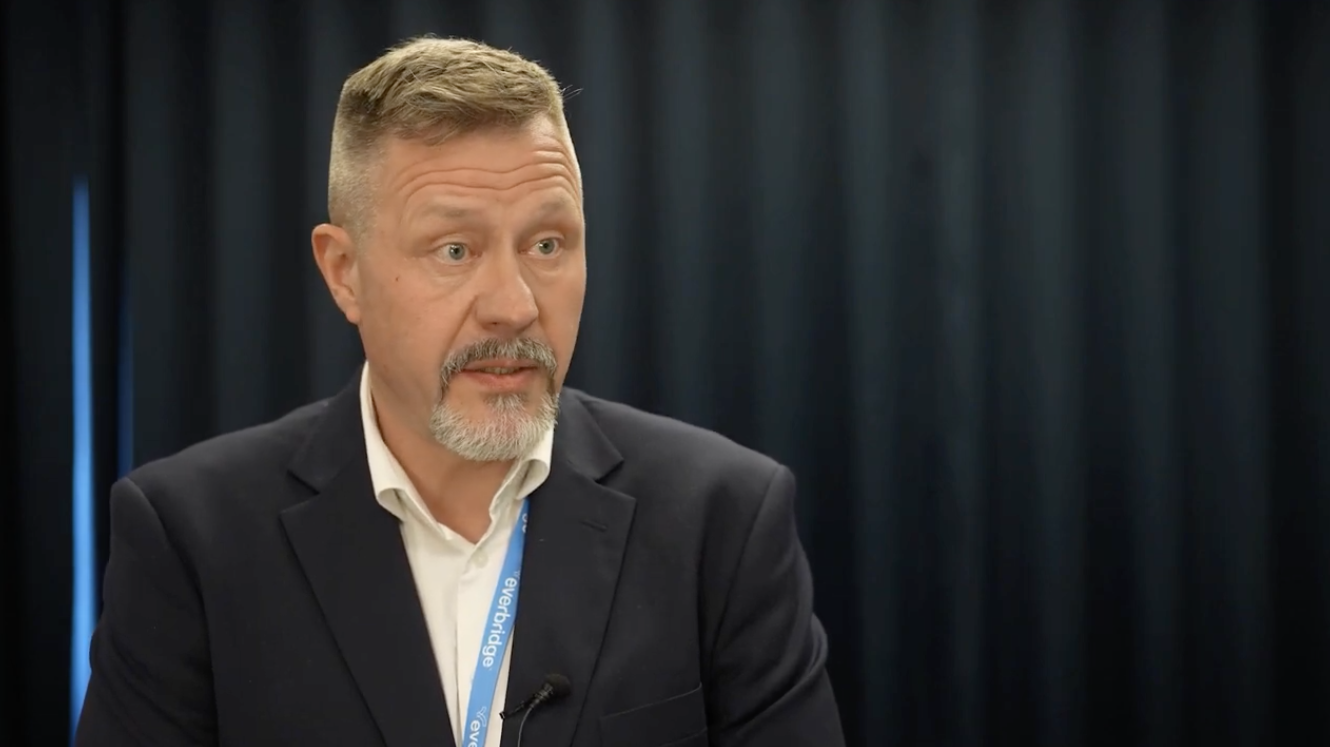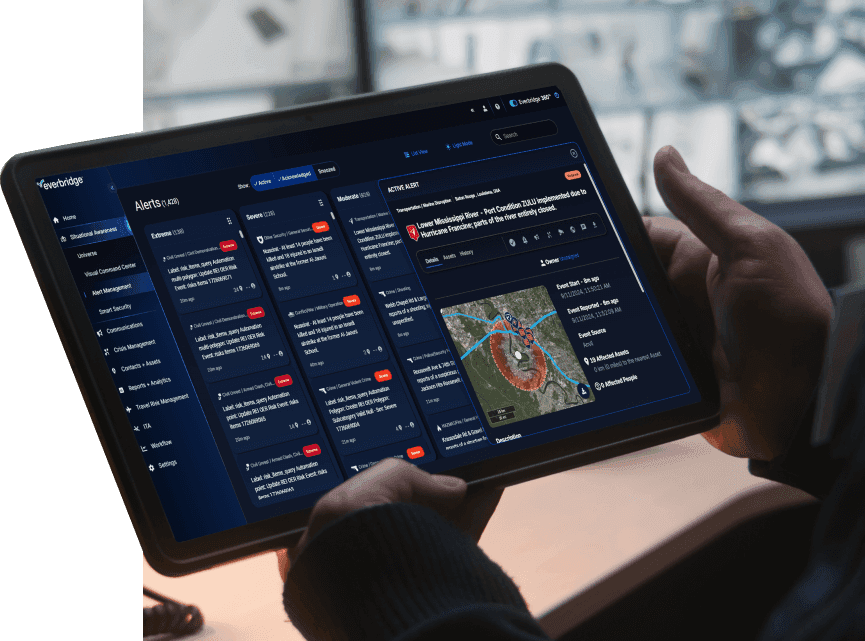
Top 10 questions to ask when Choosing the right business continuity platform
In today’s environment of heightened risk, operational complexity, and regulatory scrutiny, selecting the right business continuity platform is more than a technical decision—it’s a strategic imperative. Whether you’re a Business Continuity Manager ensuring plan effectiveness, a Risk Officer safeguarding compliance, or an IT Disaster Recovery (DR) leader striving for uninterrupted service delivery, your organization’s resilience depends on having the right tools in place.
Everbridge delivers a business resilience advantage with High Velocity CEM™, protecting organizations from the impact of critical events. By combining market-leading innovation, decision-ready risk intelligence, and full lifecycle automation, Everbridge ensures that managing critical events is as easy as 1-2-3. Only Everbridge helps organizations know earlier, respond faster, and improve continuously.
Selecting the right business continuity platform is a significant decision with long-term implications. It’s therefore essential to ask the right questions to ensure that the chosen solution aligns with your organization’s unique needs. To simplify your due diligence process, we’ve compiled the top 10 questions to ask potential business continuity vendors, along with valuable insights to guide your evaluation.
1. How does the platform centralize data and processes?
A strong platform should consolidate all business continuity, disaster recovery, and risk data into a single system. Centralization ensures consistency by using key data sources, reduces silos, improves visibility, and streamlines decision-making during disruptions.
What to ask:
- What type of templates are provided out of the box to get me started?
- Can the platform integrate data from existing tools like HR, facilities management, IT CMDB, risk management, and incident management solutions?
- Are there standardized import templates to manage my data?
- Does the platform provide an enterprise impact map with a unified view of dependencies and risks in my organization?
- Can I visually see upstream and downstream dependencies to understand single points of failure and critical assets?
- Can the data be segmented between business and IT DR?
- Does the platform provide standard summary reports and dashboards to see the health and status of my program and gaps to be addressed?
2. How configurable and adaptable is the platform?
The platform should be flexible enough to meet your organization’s unique needs while allowing for future growth and changes.
What to ask:
- Can I add new data tables and fields to match my organizational data?
- Are templates, calculations, and reports modifiable?
- How easily can I create new assessment templates, plan templates, and reports?
- Can I enhance a template and retain historical information and responses?
- Do I need technical expertise to apply changes to my templates, calculations, and reports? Does this require engagement with the vendor or a third party?
- Will I still receive upgrades and enhancements if I made configuration changes or modified templates?
3. Does the platform support regulatory compliance?
Compliance is a critical component of business continuity and disaster recovery. The platform should help you meet standards like ISO 22301, FFIEC, FCA, DORA, and SOC 2 while simplifying audit preparation.
What to ask:
- Does the platform provide audit logging of Business Continuity (BC)/DR activities?
- Will I receive updated templates and reports that align with regulatory requirements?
- Is there an automated workflow to alert users when information requires attention or updating?
- Can I easily generate compliance reports to provide to auditors and examiners?

4. What pre-built resources and templates does the platform offer?
Look for platforms that provide ready-to-use templates and workflows aligned with industry standards to save time and ensure consistency.
What to ask:
- Are the templates aligned with industry standards and best practices?
- Do they cover key areas like impact assessments, planning, testing, risk management, and reporting?
- Can templates be easily configured without technical expertise?
- Can I easily modify dropdown options to align with my terminology and resource types?
5. Dependencies
Understanding dependencies is key to effective recovery planning. The platform should visualize upstream and downstream dependencies and identify single points of failure.
What to ask:
- Can I configure the dependency view to see what matters to me?
- Are orphaned records and critical dependencies easily viewable?
- Does the platform provide tools to assess the impact of failures across the organization?
- Can I filter and see key asset dependencies at multiple levels?
- Are dependencies considered when testing my plans?
- Can I see where there are gaps in my response and recovery times for key dependencies such as applications and suppliers?
6. What type of reporting is available in the platform?
All tasks are not the same and should be dynamic based on the response phases and plan type they are associated with.
What to ask:
- Does the platform provide out-of-the-box reports for Business Impact Analysis, Plans, Risks, and Testing?
- Can I create new reports?
- Can reports be automatically sent to stakeholders without manual intervention?
- Are gaps for recovery time objectives (RTOs) easily identified (i.e. application recovery, supply chain, exercises)?
- Are summary reports available to roll data up to location, business entity, or executive leader/stakeholder?
- Can non-licensed users access copies of plans?
- Does the platform provide standard summary reports and dashboards to see the health and status of my program and gaps to be addressed?
7. What automation capabilities does the platform offer?
Automation reduces manual effort and ensures consistency. The platform should support automated workflows for creating, updating, and approving plans, as well as testing and tracking results.
What to ask:
- Can the platform automate alerts, testing, and reporting?
- Does it include automated workflows for cross-departmental collaboration?
- Can workflows be modified based on my organizational settings and frequency for updates?
- Can the platform escalate delinquent activities to leadership for higher levels of visibility and accountability?
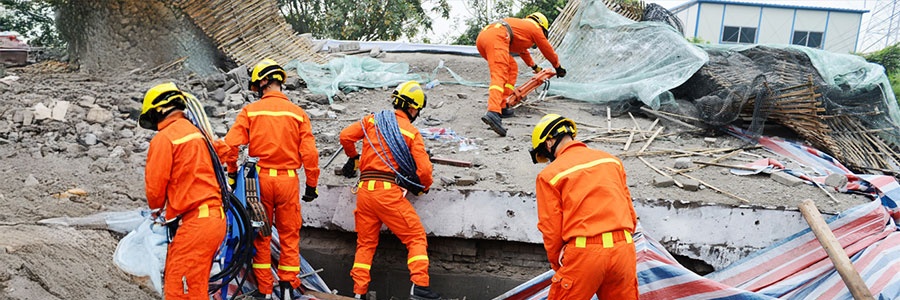
8. How does the platform support program visibility?
Dashboards and analytics are essential for tracking program health and readiness. The platform should provide real-time insights and executive-level reporting.
What to ask:
- Can it generate reports that communicate ROI and resilience metrics to stakeholders?
- Does it offer dashboards to visualize program health and readiness?
- Can I create or modify my own reports or do I need to engage with the vendor?
- Can I track the progress of recovery when conducting an exercise/test?
9. Does the planning platform provide integration with critical event management?
Integrating planning with critical event management is essential because it bridges the gap between proactive preparedness and real-time response. Together, they create a seamless, end-to-end approach for managing disruptions, ensuring the plan information is accessible, visible, and leveraged for response activities.
What to ask:
- Does the platform provide automated integration between planning and critical event management for free?
- What information is available from my BIA (Business Impact Analysis) and plan to help make informed decisions regarding impact?
- Can I see the dependencies and resources required for recovery?
- Can I activate plan response strategies and track recovery tasks being completed?
- Does my executive team understand why incidents were invoked and see incident trends over time?
- Does the platform show my team which services to restore and in what order during an incident?
10. What training and support are available?
Even the most intuitive platform requires training and support. The vendor should offer resources to ensure smooth onboarding and long-term success.
What to ask:
- What onboarding and training options are included?
- Is ongoing support available to address future needs and challenges?
- Is support a paid service or included in the subscription?
- Do I need to engage with a third-party vendor for support or changes to myprogram and what is the cost?
- Are there self-service training sessions available if I want to expand my use of theplatform?
- Do I need a license for test participants and infrequent users such as plan or BIAapprovers?
- How long is a typical implementation?
Making a well-informed decision
Choosing the right business continuity platform isn’t just about features; it’s about finding a reliable partner. By asking these 10 questions, you’ll be equipped to identify the best solution for your organization’s needs, ensuring resilience and operational continuity for years to come.
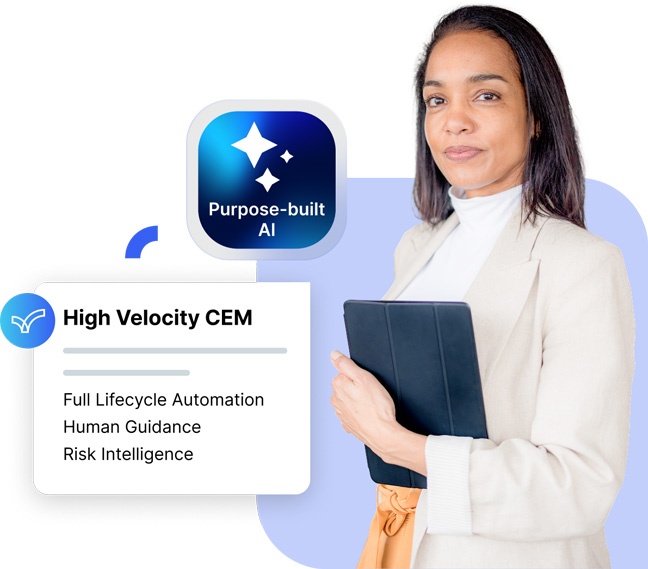
Corporate physical security is the protection of an organization’s personnel, property, data, and physical assets from events that could cause loss or damage. It goes far beyond the traditional image of “guards and gates.”
The modern threat landscape is a complex and evolving environment where physical and cyber risks are increasingly intertwined. Threats now range from sophisticated intrusion attempts and workplace violence to environmental hazards and civil unrest.
How much confidence do you have in your organization’s physical security measures?
A proactive approach to security risk management is essential for business continuity and workplace safety. Organizations require a clear, comprehensive strategy to address these challenges effectively.
Understanding today’s physical security threats
To build a resilient security posture, you must first understand the full spectrum of threats. Here are 10 common physical security threats to be aware of:
External threats
These threats come from outside the organization and can have severe consequences.
1. Unauthorized access & intrusion
Methods like tailgating, social engineering, and forced entry remain common tactics for gaining illicit access to facilities.
2. Theft
This includes not only the theft of physical assets like equipment and inventory but also the theft of invaluable intellectual property.
3. Vandalism & sabotage
Malicious actors can cause significant property damage, disrupt operations, and incur substantial repair costs.
4. Physical violence
The potential for threats from external actors, including disgruntled former employees or targeted attacks, requires dedicated active assailant incident planning.
5. Civil unrest
Protests and social instability can spill over, leading to business disruptions, looting, vandalism, or violence near corporate premises.
6. Natural disasters
Fires, floods, and extreme weather events can cause catastrophic damage to facilities, leading to prolonged downtime. For example, the 2021 Texas power crisis caused by a severe winter storm resulted in widespread outages, impacting countless businesses.
7. Environmental hazards
Chemical spills, poor air quality from events like wildfires, and other environmental incidents can threaten employee health and disrupt operations.
Internal threats
Threats from within the organization can be just as damaging as external ones, often exploiting trusted access.
8. Employee theft or fraud
Malicious insiders with legitimate access can steal assets or commit fraud, causing significant financial and reputational harm.
9. Unintentional breaches
Employees can unintentionally compromise security by leaving doors unsecured, losing access cards, or falling prey to social engineering scams.
10. Workplace violence
Situations involving disputes between employees, early intervention, and effective workplace policies are critical in mitigating these risks.
Developing a robust physical security strategy
A successful corporate physical security plan is built on a layered defense model. The “Deter, Detect, Delay, Mitigate, and Respond” framework provides a foundational structure for creating a comprehensive and effective security strategy.
- Deter:
Implement measures to discourage potential threats, such as visible security personnel, exterior lighting, and clear signage. - Detect:
Use surveillance systems, alarms, and access control to identify threats as early as possible. - Delay:
Incorporate barriers, reinforced doors, or security checkpoints to slow down or prevent unauthorized access. - Mitigate:
Develop and deploy contingency plans, safety training, and redundant systems to minimize the impact of incidents. - Respond:
Establish protocols for rapid response, including communication strategies, evacuation plans, and crisis management teams.
Alongside this framework, your security plan must include:
- Access controls:
This is the foundation of physical security. It involves physical barriers like fences and gates, complemented by electronic systems such as keycard readers, biometric scanners, and mobile credentials to manage entry. - Surveillance and monitoring:
Strategically placed video cameras (IP, PTZ, panoramic) provide real-time monitoring and forensic evidence. These are supported by alarm systems and sensors that detect intrusion, glass breaks, and motion. Utilize AI-powered surveillance systems that use advanced video analytics to automatically detect threats, recognize suspicious behaviors, and alert security personnel in real-time. - Perimeter security:
Securing the outer boundaries of a property with effective lighting, physical barriers, vehicle access gates, and regular security guard patrols is the first line of defense against external threats.
8 Steps to create a corporate physical security strategy
1. Conduct a security risk assessment
The first step in developing a physical security plan is to perform a thorough risk assessment. This process identifies potential threats, vulnerabilities, and critical assets that need protection. These are then prioritized in a risk matrix assessed by likelihood to occur and potential impact.
You should evaluate numerous factors, such as crime rates in the area, internal risks like employee misconduct, and environmental concerns such as natural disasters. Then, based on your risk analysis, prioritize and implement risk mitigation measures that provide the greatest risk reduction.
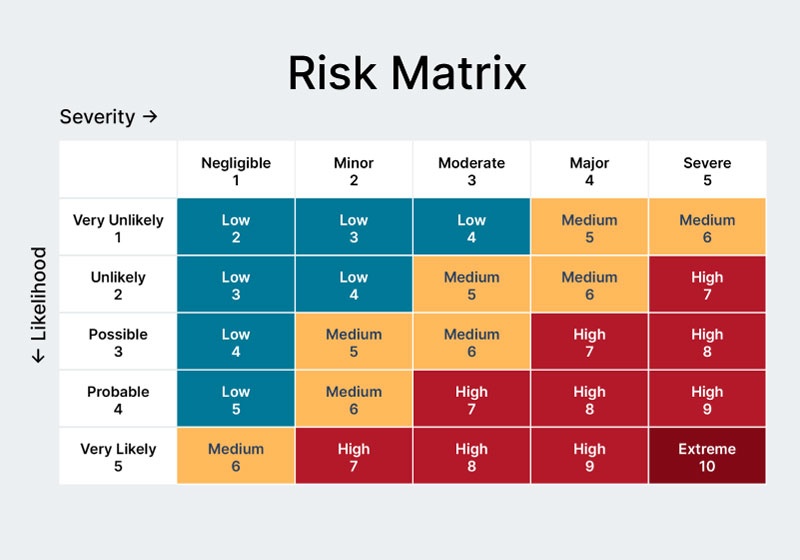
2. Define security objectives
Clearly outline the goals of the security plan based on the results of the risk assessment. Objectives may include safeguarding employees, preventing unauthorized access, ensuring compliance with regulatory requirements, minimizing loss during security incidents, or building operational resilience. Defining these objectives helps align security initiatives with organizational priorities.
3. Inventory existing security measures
Take stock of any existing security infrastructure and protocols, such as access controls, surveillance systems, emergency response plans, and systems. Assess the performance of these measures to identify gaps or areas needing upgrades. This evaluation ensures that resources are utilized effectively and helps avoid redundancy.
4. Develop layered security measures
Adopt a multi-layered approach to physical security by combining various strategies such as policy implementation, access control systems, intrusion detection technology, critical event management systems, and robust perimeter defenses.
Integrating these measures creates multiple barriers that deter or delay potential threats. The layered approach ensures both proactive and reactive protection.
5. Design emergency response protocols
Establish clear and actionable response plans for various scenarios, including fires, active assailants, intrusions, and natural disasters.
These protocols should be designed to prioritize safety, minimize confusion, and facilitate a swift resolution. Include communication plans to notify key stakeholders and coordinate with law enforcement or emergency responders if necessary.
6. Integrate technology and automation
Leverage advanced technologies to enhance security operations. This may include automated access management systems, AI-powered surveillance for real-time threat detection, or centralized monitoring platforms.
7. Train employees and conduct drills
Employees are a critical component of any security strategy. Technology alone is insufficient, as it can be undermined by human error. Comprehensive employee training programs are essential to foster a security-conscious culture.
Hold regular training sessions to educate employees on recognizing and reporting suspicious activities, understanding emergency procedures, and adhering to access control protocols. Conducting periodic emergency drills or tabletop exercises ensures readiness and identifies areas for improvement.
8. Monitor and evaluate performance
Security plans should be dynamic, not static. Regularly monitor the effectiveness of the implemented measures through audits, inspections, and performance metrics.
Use data from incidents or simulations to refine the plan as needed. Schedule periodic risk assessments and penetration tests to identify new vulnerabilities. Your plan should be updated based on these findings, as well as changes in the threat landscape, business operations, or technology.
Securing your organization’s future
A modern corporate physical security strategy requires a proactive, multi-layered approach that integrates technology, processes, and people. The future of security lies in the convergence of physical and cybersecurity, driven by predictive analytics and unified platforms.
By adopting a comprehensive security risk management framework, you can build a resilient organization prepared to face today’s threats and enhance workplace safety and security.
Ready to unify your security operations and gain a complete picture of your risk landscape? Get a demo of Everbridge to see how our platform can transform your security strategy.
Today’s leaders are more exposed than ever before, due to constant digital connectivity and public visibility. This new era brings complex risks that go far beyond traditional physical security. Successful executive protection now requires a strategy that addresses both digital and physical threats, often occurring at the same time.
Recent high-profile incidents highlight the rising challenges. Organizations have a duty of care to protect their leaders, but is your executive protection program keeping pace with increasing risks? A new study undertaken by ASIS International and Everbridge uncovers critical gaps and opportunities, and this post explores how the threat landscape is evolving, what challenges organizations face, and the key strategies to build a robust protection program.
Executive protection in a shifting threat environment
Executive protection has surged up the agenda. According to the new study, 42% of security professionals report a significant increase in focus on executive protection in just the past 18 months, a clear response to a rapidly growing and evolving threat landscape.
Two major drivers are fueling this urgency:
- Rising public threats (72%): Social media and online forums amplify dissent and anger, often breeding direct threats against executives.
- High-profile incidents (69%): Events such as the assassination of a prominent CEO in 2024 have put executive risk on center stage for boards and security leaders.
The lesson is clear: executive visibility, including digital presence and company communications, increases vulnerability. Threats are now global, persistent, and often initiated online.
The modern threat: where digital meets physical
Threats today arise from the intersection of online and offline worlds, creating complex scenarios that traditional security alone cannot address.
Physical threats enhanced by technology
Traditional kidnapping and assault scenarios have evolved. Attackers use digital tools to plan incidents, analyze public routines, and bypass conventional security. Publicly shared information makes executives’ movements predictable, while personal tech can compromise safety almost anywhere.
Escalating cybersecurity threats
Cyberattacks against executives are more frequent and sophisticated. Deepfake technology, for example, can create fake video calls and social media content nearly indistinguishable from reality. One organization lost $25.6 million in 2024 when a finance employee joined a deepfake video call with “colleagues.” Online intimidation and digital surveillance are now common precursors to real-world attacks.
Challenges holding back executive protection
As risks mount, many organizations struggle to implement effective protection programs. The recent ASIS and Everbridge research spotlights disconnections between awareness, funding, and action.
Budget and executive buy-in
Budget limitations (58%) are the largest barrier, followed by executive non-compliance (47%). These challenges reinforce one another: without executive support, security programs lack funding; without resources, their value remains unproven. For programs to succeed, security must be framed as a business enabler, key to continuity, reputation, and leadership confidence, not as a mere checkbox.
Gaps between awareness and action
According to the ASIS and Everbridge research, there are stark differences between how important security professionals rate various practices and their ability to implement them:
- Online threat monitoring: 65% say it’s critical; only 51% feel equipped to do it well.
- Protecting digital assets & secure communications: 57% rate it highly; just 42% feel capable.
- Behavioral threat profiling: 48% see it as important; only 33% have solid capabilities.
These gaps reveal that while digital risks are widely recognized, many organizations aren’t yet equipped to manage them effectively.
Key strategies for modern executive protection
To address these challenges, organizations must modernize their approaches, merging analysis, technology, and people.
Integration of digital and physical security
Threats originating online can escalate rapidly into the physical world. Effective executive protection uses open-source intelligence (OSINT) and social media monitoring not just to track sentiment, but to identify specific, actionable threats. The study found that while OSINT is widely used (82%), most organizations lack the tools for real-time analysis or behavioral threat detection. Investing in these technologies makes it possible to move from reactive to proactive risk management.
Proactive travel risk management
Executive travel is still a top exposure. Yet many companies take a piecemeal approach:
- 18% rarely or never assess travel risks in advance.
- 25% don’t offer pre-travel safety briefings.
- 30% only monitor intelligence after a known threat arises.
This reactive stance leaves executives vulnerable. Best practices demand pre-trip risk assessments for every journey, thorough briefings, and ongoing monitoring, not just after a threat emerges.
Governance and training
High-level support is essential. Board oversight, adequate resources, and executive participation in security planning are crucial, not just for physical threats but as part of broader cybersecurity compliance. New SEC rules underline the need for C-suite involvement.
Yet training often lags. While situational awareness training is common, scenario-based exercises are rare, despite being invaluable for testing protocols. Fewer than half of organizations offer executives training in emergency procedures, IT security, or even self-defense, leaving many leaders unprepared for new-age threats.
Building a culture of security
Technology is only half the battle. Fostering a culture where leaders understand risks, model best practices, and cooperate with security staff is vital. Security teams should track incidents and measure the effectiveness of their programs, using data to make the business case for ongoing investment.
The path forward: resilient, data-driven protection
To secure buy-in and resources, security leaders must present protection as a strategic investment and support this with measurable results. Yet, according to the ASIS and Everbridge study, more than a third of organizations lack any formal evaluation process for executive protection.
By implementing clear KPIs, tracking incidents, and analyzing outcomes, organizations can demonstrate value, adjust tactics, and ensure constant improvement.
As the threat landscape grows more complex, protecting today’s high-profile leaders demands an integrated, data-driven approach. Digital and physical security must operate in tandem, powered by proactive intelligence, solid processes, board support, and comprehensive training.
Is your protection program evolving with the times? To benchmark your organization or learn how to strengthen executive protection, download the full Executive Threat Environment Report.
Want deeper insights and practical advice? Watch our on-demand webinar, Executive Protection in a Volatile World, and gain strategies directly from leading experts.
Full Transcript
[00:06.8]
I’m Jouni Laiho, Corporate security director for Wärtsilä. And Wärtsilä is the producer of innovative lifecycle solutions empowering the marine and energy sectors. Originally we had a need to implement one global solution and the related processes to support our business travelers wherever they are and whenever they need support.
[00:32.5]
Covering both travel, medical and security incidents handling and of course everything that relates to business traveling, keeping our employees, safe. The number one for us was the ability to provide an easy solution for our business travelers.
[00:57.3]
We are present in very many high and extreme risk locations, on the planet. Hence it’s very important that our business travelers, they are informed pre, during and sometimes even after the business trip.
[01:14.8]
And they need to have an easy solution how to contact in case questions or need, for help. The main benefits, are stemming from the automated incident alerts.
[01:31.0]
So ie: essentially the information that Everbridge provides, towards our employees, and then also, it’s very important for us to have the capability when needed, to understand where our business travelers are, send them mass notification messages when needed and to track in case they have a need to be supported and helped.
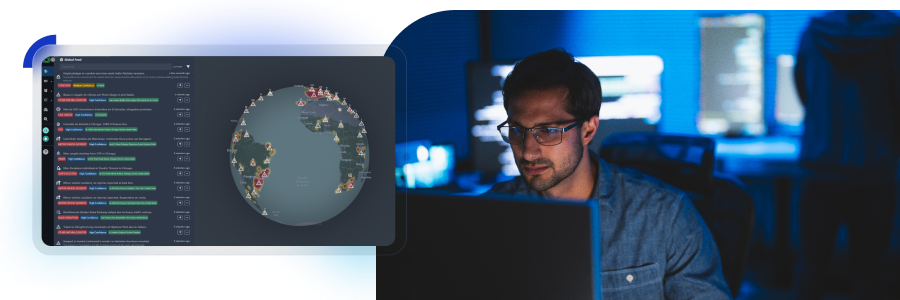
Everbridge Signal
Available with Everbridge 360™ Enterprise, Everbridge Signal cuts through online noise to identify critical information—saving time, resources, and lives. By enhancing resilience, protecting people, and enabling informed decisions with real-time situational awareness, it ensures operational security and safeguards your organization’s reputation.
Key benefits
- Know: Stay informed with real-time monitoring and actionable intelligence for complete situational awareness.
- Respond: Receive AI-powered alerts enabling rapid, informed decisions to mitigate threats effectively.
- Improve: Enhance operational continuity by protecting people, assets, and reputation through smarter risk management.
AI-powered intelligence for business resilience and safety
Everbridge Signal is an AI-powered open-source intelligence solution that monitors global data sources, including social media and the dark web, to deliver actionable insights and early warnings. With advanced features like automated alerts, machine learning filters, and emotional analysis, Everbridge Signal ensures informed decision-making to mitigate risks and secure your organization’s safety and reputation effectively. It automatically detects and alerts to incidents and events around the world, in multiple languages, unlocking risk intelligence on a global scale.
Key features and outcomes
- AI-powered alerts and triage: Automatically detect incidents and provide early warnings with on-demand AI incident briefs (SITREPs). AI triage agents enable proactive decision-making to mitigate threats before they escalate.
- Global monitoring: Leverage AI to uncover threats in real time across mainstream and hard-to-reach platforms—including social media, messaging apps like Telegram and Discord, forums, blogs, and the dark web—for unparalleled risk intelligence and proactive situational awareness.
- Machine learning filters: Eliminate irrelevant data using proprietary algorithms, allowing you to focus on actionable insights and critical information.
- Natural language emotion analysis: Understand emotional tone in online content for deeper context, empowering smarter decisions regarding potential risks.
- Customizable dashboards: Visualize data with geo-location mapping and sources, simplifying complex information into actionable steps for stakeholders.
- Executive protection, elevated: Leverage Generative and Agentic AI to analyze, categorize, and generate real-time alerts—delivering proactive, precision-driven security for your most high-profile individuals.
- Investigations: Research and analyze potential active threats through proven intelligence-gathering methodologies.
These features and the integration with CEM, drive crucial outcomes such as faster response times, enhanced resilience, and improved protection for people, assets, and reputation. With Everbridge Signal, gain the clarity and control needed to operate securely in an evolving threat landscape.
What makes Everbridge Signal different?
- AI-powered global intelligence: Combines AI with worldwide monitoring to detect risks in real time.
- Machine learning relevance: Filters out noise, delivering only actionable insights.
- Emotion analysis: Unlocks deeper understanding of content sentiment.
- Regulatory compliance: Utilizes only publicly available data, ensuring ethical and secure operations.
